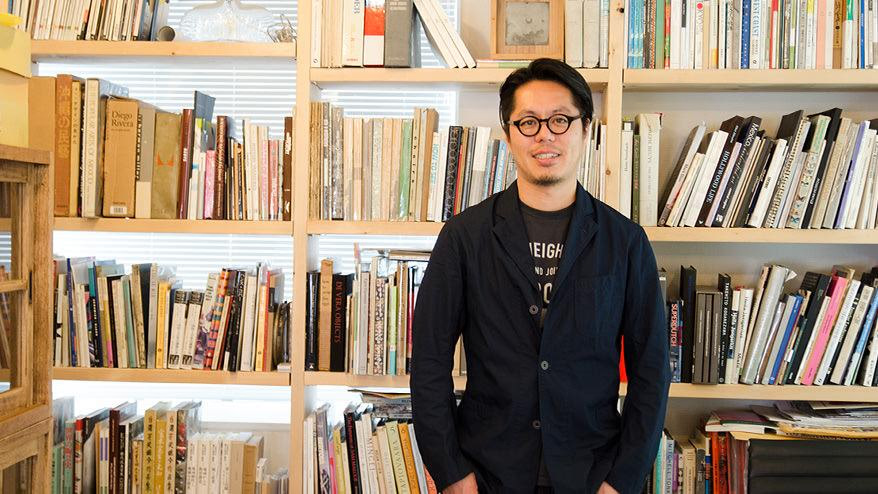He is known as a musician in the stateless band Double Famous , playing trumpet, trombone, and percussion.
He also works as an event producer, hosting the outdoor event " GOOD NEIGHBORS JAMBOREE " held in Kagoshima.
He is the co-president of BAGN Inc, a direction company within landscape products.
He is also known as a facilitator who launched projects such as the ` `OK PROJECT '' in response to the Kumamoto and Oita earthquakes.
Our guest this time, Shuuichirou Sakaguchi, can't quite find a title or words to describe his work in one word.
One day he was in Tokyo, the next day he was in his hometown of Kagoshima, the next day Okayama, and Hokkaido. He seems busy, but he is always kind and positive. I can't help but wonder what action he will take next.
What kind of activities and working styles do they have there? We got up close and personal with the mysterious Mr. Sakaguchi's daily life.
(Interviewer: Kensaku Saguchi)
Building connections so that people can help each other when they are in trouble is the best support of all.
Kumamoto and Oita were hit hard by the earthquake that hit in April. Sakaguchi launched the "OK PROJECT" to provide support to the region. We began the interview by asking how he came to lead an initiative that is different in nature from music events.
"The day the Kumamoto earthquake occurred, I had just returned to Kagoshima. When I arrived, I saw that there had been extensive damage in Kumamoto and Oita, and a friend of mine in Amakusa had posted on Facebook that 'The situation is somewhat critical. We don't know what will happen. The aftershocks haven't stopped.'
All my meetings were canceled, and I had a lot of free time, so I thought I'd go and bring some supplies since they seemed to be in short supply. While I was collecting things in Kagoshima, I figured someone else would pick them up.
However, there were not enough cars. There was no one who could go. But I had a car and I had the time for one day. So I said, "I'll go."
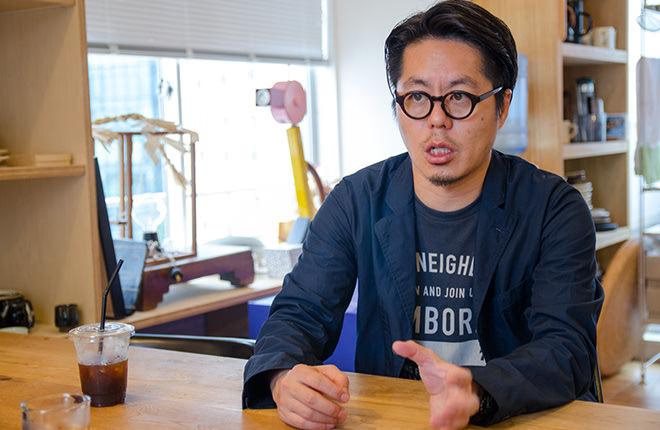
At the Landscape Products office
However, the expressway was unavailable and the only national road was jammed with traffic, so the idea of a ferry that traveled between Nagashima in Kagoshima and Amakusa in Kumamoto came to mind, which I knew about from a festival I had advised on last year.
Sakaguchi used the ferry, which had already resumed normal operation the day after the disaster, to deliver supplies to his friends in Amakusa. This activity continued for about a week afterwards. The main participants were the executive committee of the "GOOD NEIGHBORS JAMBOREE," which will be explained in detail later.
"There is no one person in charge of delivering the parcels, but rather whoever has free time in their schedule delivers them. For a while, I would load the parcels into the sales cars of my friends' florists, shochu breweries, and soy sauce makers, and take them there.
However, Japan is an excellent country, so logistics was quickly restored and supplies were available. So, is there anything else that needs to be done as the next step? When I asked people there, I got the following responses.
"We can't sell anything and we can't even open our stores," he said. "When the Great East Japan Earthquake happened, there was no shaking in Kyushu, so I didn't really realize how bad it was, but now I realize how difficult it must have been."
"And despite the shaking, the tsunami, the fires, and the nuclear accident, people in similar businesses have rebuilt their stores and are still in business. How did they do it? I'd like to hear it."
At that time, Tomomin (Matsuoka Asami, Program Manager of Disaster Prevention and Reconstruction Projects at Google Inc.), who runs Innovation Tohoku, was also there, and since I also had a connection with Tohoku, we talked about how it would be nice to create an opportunity for small business owners to talk to each other. That was the beginning of the OK PROJECT.
The first "OK PROJECT" event, the "Kumamoto Oita Open Meeting," was held in June and directly connected people who had overcome the Great East Japan Earthquake with those affected by the Kumamoto Oita earthquake. ( Event report by HOOD Tenjin )
On the day, approximately 170 people participated using Google Hangouts from the main venue in Fukuoka (Tenjin HOOD), as well as from Kumamoto City, Beppu City (Oita), and Tokyo.
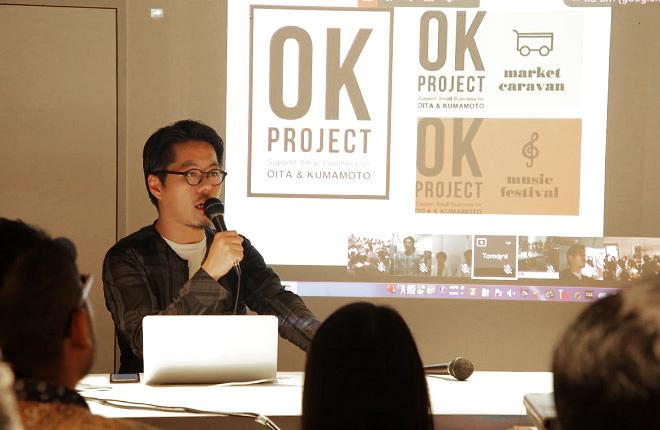
Despite the talk session being held via screen, all 170 people in the venue shared the same enthusiasm and atmosphere.
"When it was over, I felt that more people participated than I had expected. Everyone had a vague desire to do something, and when they were given the motivation, they took action. I realized once again that the most important form of support was to create connections.
For example, after the Great East Japan Earthquake, we held an event for Mashiko potters in cooperation with Isetan, but what made us even happier than the success of the event was that it created connections between the potters. They usually make things in their own studios, so they live close to each other and do similar activities, but they said they had never had a chance to talk to each other properly.
The exhibition and sale created a connection, and even after that, the community members started to contact each other and help each other when they had problems. In the end, that's the greatest form of support. Being able to form connections that help people when they're in trouble is more important than money or supplies. I think it was great that the Kumamoto Oita Open Meeting was able to create an opportunity for that to happen."
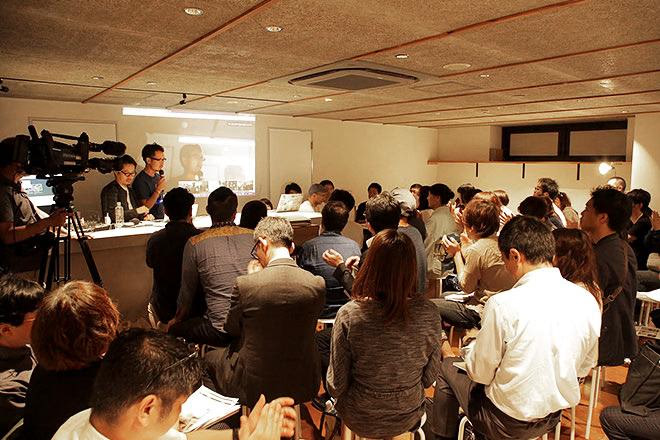
Participants listened to the talk and took notes earnestly. The event was also broadcast on NHK Fukuoka.
If a friend is in trouble, I'll help them,
I think I'll try to do something I can do.
The "OK PROJECT" is continuing even after the "Kumamoto-Oita Open Meeting". It did not end with the realization of the open meeting, but has developed further thanks to Sakaguchi's unique approach to support.
"Immediately after a disaster, sending supplies is an obvious action, and things come in at an incredible rate. The same goes for giving donations, and money comes in at an incredible rate. Of course, these are important things, but after a while, a mismatch begins to emerge.
It's like a traffic jam of aid, where everyone takes the same action, causing a traffic jam of goods and money. However, if you look around the area, you'll find that there are places where there is no traffic jam, and in fact, there are many places where aid is not reaching everyone.
Once I realized this structure, I wanted to do something. But what could I do? When I thought about it, I realized that it wouldn't work unless it was an action that was directly connected to what I do on a daily basis.
In that respect, I regularly plan market events and music events. I know the benefits of new connections being formed and expanding among the people involved. If I were to provide support, I thought this would be the way to do it."

A look at OK Night, hosted by Google's Matsuoka, held at a club in Shibuya.
(Left) Sakaguchi's friends from Kumamoto also participated in OK Night.
(Right) Sakaguchi was the DJ on the day. His characteristically comfortable rhythm made everyone feel good and intoxicated.
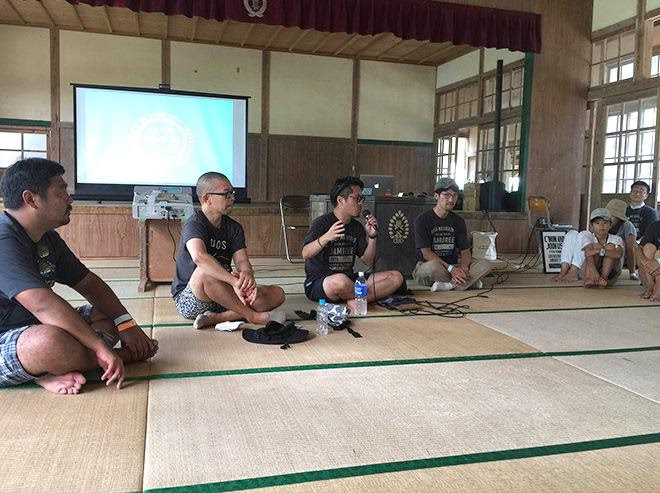
The OK PROJECT report session was held at GOOD NEIGHBORS JAMBOREE 2016
The provision of supplies and financial donations is meant to help people get through the crisis. Even after people have had a moment to catch their breath, their lives will continue.
"The most important resource at such times is 'human connections.' If you are selling something, you need to increase your customer base. This will lead to continued sales growth. If you can no longer sell your goods within Kumamoto or Oita, you can simply go outside and sell your goods there. If you make new connections by going outside, you will be able to continue your business.
Creating opportunities for such matches is something I do on a regular basis, so I thought I could do it and continued with the "OK PROJECT".
In fact, I feel like I've completed the first step of creating an opportunity. I reached out to commercial facilities that I have a relationship with, such as Shibuya Hikarie and JR's AMU Plaza, and the people in charge at each facility quickly got to work, and we were able to hold markets called "Kumamoto Oita Reconstruction Support Market OK SHOP" all over Japan.
The response was good at all the venues, and not only were sales good, but in Shibuya, people from Kumamoto and Oita living in Tokyo encountered local shops and activities, becoming new wholesale customers and expanding connections ( Shibuya Hikarie 8/COURT page ).
When you connect with someone and become friends, if they are in trouble, you think about helping them, or rather, you want to do something before you think about using grand words like support. When it comes to disasters, it could happen to you tomorrow. If something happens to the person who is currently providing support, other people will provide support. That's the best way to do it, and that's the best safety net. They've done it for you, so now it's your turn."
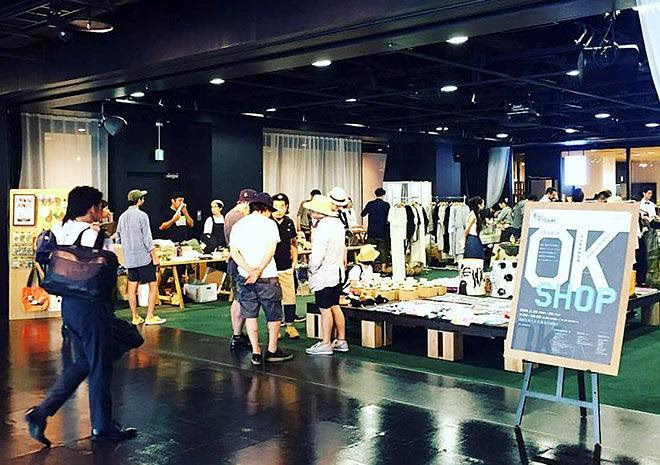
Kumamoto and Oita shops will open for a limited time at Shibuya Hikarie 8F COURT. With a carefully selected lineup, some items will sell out immediately after opening.
I want to go to my favorite town, so I'll create a job there.
The word "connection" was used many times during the interview. Mr. Sakaguchi values connections, and it seems that he has many faces and is involved in connections that are broader, more flexible, and more unexpected than anyone else's.
In fact, when Uemura and Sakaguchi attended an event in Kuroiso, Tochigi Prefecture, he was surprised to hear people calling out to him every five minutes. How did these encounters and connections come about?
"It's not something you can just make if you want to. I wonder why... I wonder (laughs). I've never really thought about it. When you ask me that, I think back to when I was originally a musician, so I traveled all over the place to perform live. Then, there are 1 to 1,000 people, and they get to know me. But normally musicians just play on stage, go backstage, and that's it, but in our case, we keep going down the line.
Because of that style, I've become friends with a lot of people. Moreover, when I get to know them that way, I immediately think, "Oh, that person can do this, that person can do that," and when I have work to do, I casually call out to them. I think that repetition of that is how communication is born and spreads."
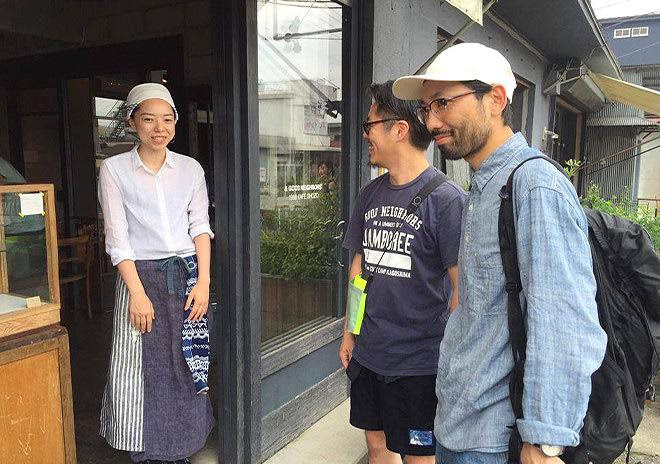
"It was a rare day when I had a free day," said Sakaguchi, who traveled nearly three hours to the Kuroiso event. This diligence is also the reason for the strong connections he has made.
Looking at Sakaguchi's Facebook timeline, yesterday he was in Tokyo, today he's in Kagoshima, and he's flying all over Japan. His impression is that he's quick on his feet and moves around when he's needed and called upon.
"That's right. I use my network and footwork to go to places where my friends are. Basically, I try to give something back to those who offer me something. If I'm free, I go.
Also, there are a few towns around the country that I get along well with. In Hokkaido, Higashikawa, and in Tochigi, Nasu, Mashiko, and Kasama. I also really like Kamiyama, and in Okayama, Takamatsu, Kochi, Fukushima, and Kagoshima.
I want to go to a town I like, so I'll create a job there. When I go to Nasu, the people there will talk to me and say, "Let's do something next time." Then I can go there again.
So, in terms of mental distance, Ikebukuro is farther away than Kagoshima, and Okayama is closer than Kichijoji. Because it's not a matter of physical distance, the map of Japan in my mind may be very distorted."
How did you develop this unique work style?
"I've never been good at staying in one place for a long time. So when I was a student, it was really painful to go to the same place every day. But I thought it was wrong to feel that way. I thought I was no good, and I felt inferior. That's not what education is about. You just have to come to school every morning and do the same thing every day.
But one day, I started to wonder why I was being forced to do this. I started to think that there must be other ways of living. However, I didn't know how to do it, so after graduating from university, I worked for an apparel brand for a while. However, even then, I found it hard to go to the store every morning, so I would ride my bike around during my break.
I was working in Daikanyama, and I would get lost and not be able to get home, and I would get yelled at. That kind of thing happened all the time. But I thought it was a wash because I met all kinds of people when I got lost, and the people I got to know that way would come and shop with me.
Well, the company was like, "We won't allow it!" But I thought I was better suited to a work style where I could go out during my break. Once I realized that, it was really a process of trial and error that led to my current style."
From the Daikanyama area to all of Japan. How did their scope of activities expand? In the second part, we will learn more about the marble-like work style without barriers of work-life balance that they arrived at after trial and error, the concept of "GOOD NEIGHBORS" that they cherish as neighbors, and the outdoor event "GOOD NEIGHBORS JAMBOREE" that they hold in their hometown of Kagoshima. (To be continued in the second part tomorrow)
Profile of Shuichiro Sakaguchi
Representative of BAGN Inc. Born in Kagoshima in 1971.
In 1993, he formed the stateless band Double Famous . Since 2010, he has been organizing the outdoor event GOOD NEIGHBORS JAMBOREE in his hometown of Kagoshima. He also participates in Landscape Products and co-founded the direction company BAGN Inc. within the company. He also produces a variety of events across genres.
GOOD NEIGHBORS JAMBOREE 2016
Date: Saturday, August 20
Time: 11:00-21:00
Location: Kawanabe Forest School (3728-2 Honbeppu, Kawanabe-cho, Minamikyushu-shi, Kagoshima Prefecture)
Price: Advance ticket: ¥5,000 / Same-day ticket: ¥6,000 (free for elementary school students and younger / separate workshop participation fee)
Participating artists: UA / otto&orabu (Shobu Gakuen) / The Pints / THE ACOUSTICS / monoclaft / kokomoonpelli / Robin Dupuy GOOD NEIGHBOR DJs / Takuji Aoyagi: Circle Voice / GOOD NEIGHBORS MARCHING BAND
HP: http://goodneighborsjamboree.com/2016/
